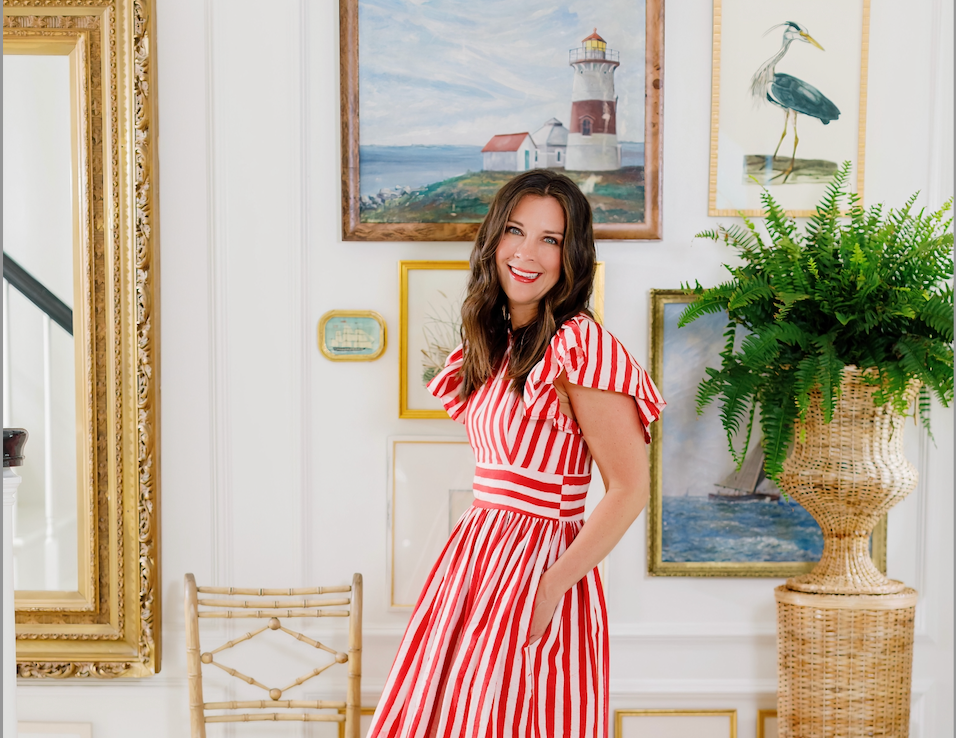The 50 States Project is a series of candid conversations with interior designers across the country about how they’ve built their businesses. This week, St. Louis–based designer Amy Studebaker tells us why she wants her clients to care as much about the details as she does, how Instagram has broadened her geographic reach, and how she learned to set—and meet—every client expectation.
What pushed you to launch your firm?
I got my degree in design, and I always knew that I wanted my own design firm. But I had to calculate: What are the steps to make that happen? I knew step one was not going to be just opening up a firm—it was working for a firm to understand what that looks like. Straight out of school, I started as an intern for a local company here in St. Louis, and then was hired on as a design assistant. There were eight or nine designers and a design assistant on the team, and while I was there, I really learned what it was like to do POs and place orders, how to calculate yardages—it was the backbone of everything. After a couple of years, I went to work for a [small firm], where it was just the designer and me. I took in everything that I felt was working, and also what I noticed was not working. After about five years, I felt very comfortable saying, “OK, now’s the time.”
I was offered a wonderful, large-scale project through a connection I made during my time with that designer, and it was just this moment of all the right things hitting at the right time and knowing that I needed to take the step.
What was the opportunity?
It was for a client in St. Louis, working on tying up construction on their 10,000-square-foot home and then doing all of the interior decorating. I was in my mid-20s and on my own [for the first time], so inside I was a little nervous, but I felt like that was a great way for me to begin. It wasn’t a full-on construction job I was personally responsible for; it was just some minor things on the construction side and then ordering everything for the house.
Did that become the backbone of your portfolio to go out and get more work?
We did photograph that project for a national magazine—it was a very small publication, not one that everyone has heard of, but I was still so excited for the opportunity. But what really got me started was that I did a great job of connecting with the client and listening to their needs, and then setting expectations and performing to [the standards] I told them I was going to perform to. Then they just said wonderful things about me to other people in St. Louis. After that project, my business [grew] by word-of-mouth.
I love that you just mentioned expectation-setting, because that’s so easy to overlook but is so essential to the client experience. What’s the secret to getting that right?
I always listen when my clients tell me [what went wrong] if they had hired somebody in the past. They might say, “I’ve worked with somebody who just drove me nuts,” and I don’t indulge in it, but I do say, “OK, well, thank you for letting me know.” I take in the bits and pieces of information from people over time, listening to what they didn’t like, and trying to fill those gaps with the reverse. How else can I communicate? How else can we overcommunicate? We always communicate where we are in a project, where we’re going to be with the timeline or if a timeline is delayed, where their product is—we do a lot of explaining where we are with everything.
Is there a cadence to that with your firm today? How do you streamline client communication now?
When I began, it was just me, but over time, I’ve hired one employee after another, and we are now a team of 12. On the design side, we have three teams, and each team consists of a senior designer, a junior designer and me. I meet with them when we get started with a project, and then set up an initial meeting with the clients—if it’s an existing house, we’re walking the job; if it’s blueprints, we’re meeting to look at the plans.
Once we sign on, we set up the first team meeting, where we request builders, architects, the clients and my team to be present. That’s where we walk the job and talk about goals and time frames. From there, we try to meet once a week via Zoom to go over all of our design details that we’ve done for that week. We set a schedule where we set expectations for the client—like, this week, you can expect to have your cabinetry designed for your kitchen, or your dining room—and then we meet those expectations.
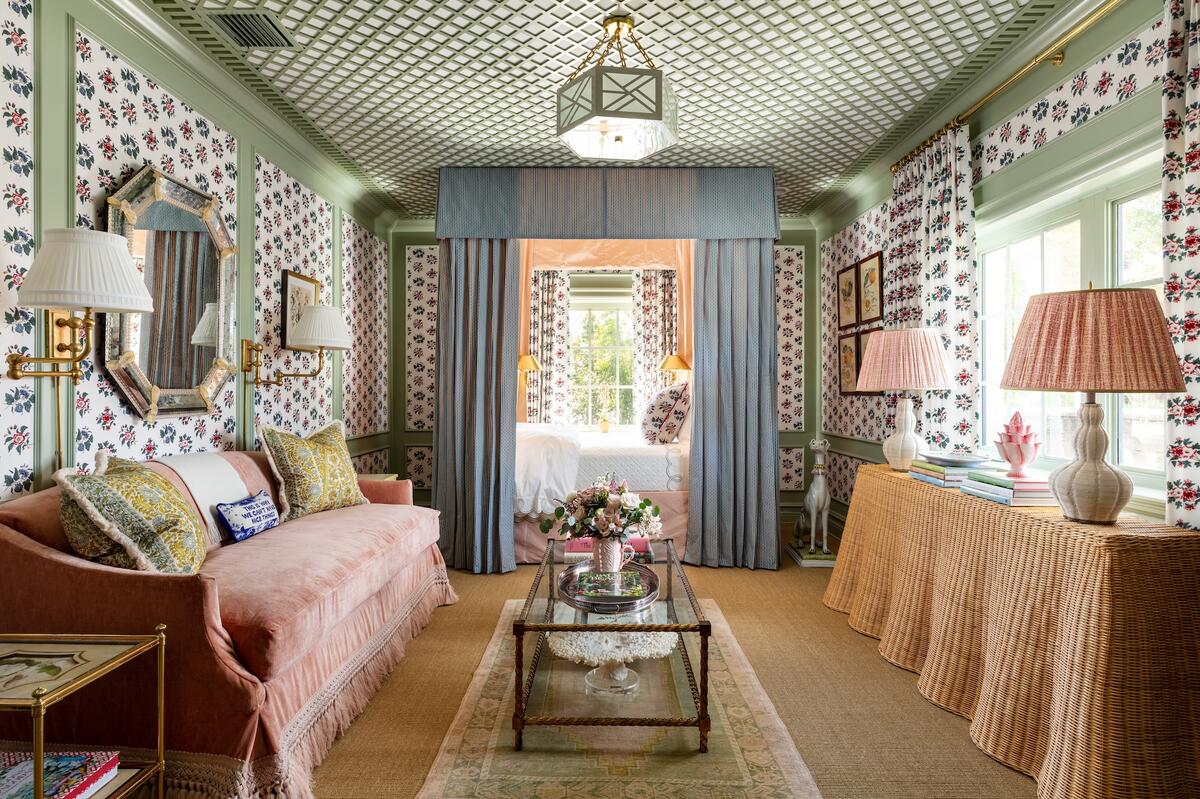
Is it always you talking to the client?
My design team is present in the meetings, and I am there for 99 percent of the meetings. But when it comes to logistics like coordinating details with contractors or reviewing information that comes in from the architects, the design team that’s been assigned to that job handles all of those. I get to be a part of the overall concept and design direction of the home, but then I have this wonderful team that really knows how to handle the logistics to make sure the project is heading in the right direction.
How did you start to grow your team so that you could take that step back?
I did everything myself for maybe six months, and I was very busy. I knew I could not work from 7 a.m. until 10 p.m. any longer, but I also wanted to be responsible with finances and hiring. So first, I hired someone part-time and [gave them] tasks like, “I need a blue welt,” or “Can you pick up these samples?” I started to realize, “This is saving me 20 hours a week, and when I pay her, I’m still making money because it’s giving me the opportunity to look at other projects that are coming in.” So I slowly moved her to full-time, and she eventually became a design assistant. After another six months or so, I finally felt comfortable letting someone oversee the finances, so I found someone to handle all of the QuickBooks and payments to our vendors, and suddenly I felt like I had gained another 40 hours back in my life.
Those two positions were what started getting me in a groove. After that, I hired another design assistant and an intern, and then kept adding design assistants. We got to a point where I felt like we needed additional people, but also [more] structure.
I know a lot of firms have a project manager that [focuses on certain elements of] all projects, but I’ve found that the people we’ve hired like to see the whole process. They want to get to know the client on a personal level, just like I do—to be able to ask, “How was your vacation? How are your kids? How is your dog?” They want to see the project from blueprints to that final hand towel in the bathroom. And so with our team approach and the way that we work, the two designers on each project get to see it through to the end. I feel like it also teaches them so much, because they’re seeing every aspect.
How has your role evolved as that team gets bigger?
I love being in design—it’s truly my happy place, and it’s basically the only thing I know how to do. I don’t know how to cook, I don’t know how to plant, but I can design the hell out of your house and make it beautiful. And I wanted to give the opportunity to feel that way to other people who were interested in design.
In the firm where I was a design assistant, you would never get to be more than a design assistant—they were never going to bring me on as a designer—and to me that just seems like such a hard stop for so many people, that they’re not going to get more responsibility or get to have their own thoughts. I wanted to create an environment where, yes, at first you’re a design assistant so you can learn, but as you grow more knowledgeable and start to see how we create spaces, you get to [add] your own input into the design process.
As I worked on stepping back [from day-to-day project details] a little bit, I figured out very quickly where my time was best spent and where I was most helpful. Am I helpful [while] going to pick out a green leather? No. Let our junior designer, who is excited about [joining] the industry, go search for green leathers to her heart’s content, because that is going to make her happy, you know? I had to know where my employees’ strengths were—and if they didn’t have that strength, I needed to teach them how to get there so that I could handle the things that make sense for me to handle as the business owner.
What are those things today? How have you identified your core responsibilities within the company?
When we’re meeting with clients, I pride myself on being able to hear a client’s needs and wants. For example, I understand why they might like this one floral over another—and if they say they don’t want this floral, it’s not because they don’t like florals; it’s because of that one little detail of how that [particular] fabric was designed. And from that, I can grasp the entire look and lifestyle they’re trying to achieve, and I can really guide my team.
My role is also still overseeing some of the construction aspects. Some of my team members have been with me for going on eight years, but others are new. I’m reviewing drawings, helping with those minute details that take [the project] from one level to the next.

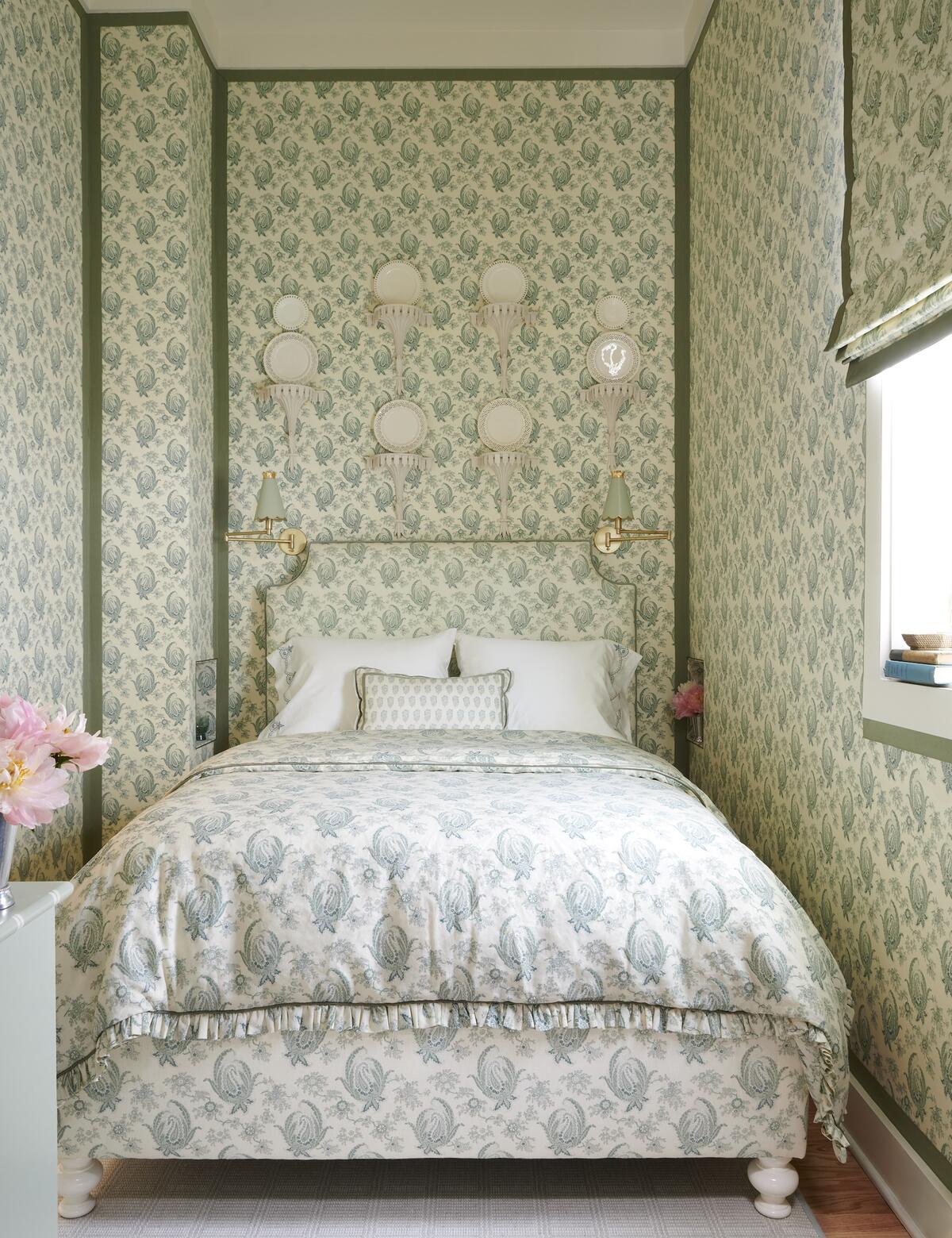
How many projects are you working on these days?
We always have somewhere around 20 to 23 projects going, but those are not all large projects. Some might be for a client that we worked with a few years ago who wants a refresh in one area, or who bought a condo and wants some furniture. The majority of the projects we take on are construction-based, whether it’s a whole-home remodel, a remodel and addition, or building from the ground up, and then we [select] and install the interior decor after we get through the construction.
Usually, there will be six larger-scale projects going at a time, some in St. Louis and some in various areas of the United States. When we’re designating projects to different teams, we’re first looking at it like, “Can this team travel? Do they already have projects on this side of the U.S., or are they on the opposite side?” We did e-design during Covid to keep the employees busy, and that was wonderful for a period of time, but it’s no longer something that we do.
What was it about e-design that didn’t make sense once the pandemic conditions subsided?
We build great relationships with our clients and their families, and my team enjoys that. When you’re doing e-design, you’re not building [as much of] a personal connection. And then at some point, it needs to become its own subcategory, with workers who just handle that, because it’s so different than the [workload of] the team that handles whole-home projects. During Covid when we had a little bit more time, everyone was on board jumping into that. But when we didn’t need to do that anymore, it was like, “OK, let’s go back to the people we’re going to spend years with as we build them a wonderful home.”
I did [consultations through] The Expert for a period of time, too, and it was a wonderful experience Zooming with these clients. A lot of them were actually Instagram followers, so it was exciting to meet them, because they already felt like they had a connection to us. But with all of our out-of-state clients, my travel schedule made it too much of a balancing act—if I’m gone Monday through Wednesday, then I only have two days in the studio to meet with my team on all of their projects, and it was becoming very unfair to our employees who were working so hard but not getting any face time with me. I ended up leaving The Expert about a year ago to focus on our clients.
That’s fun that you got to meet so many followers through it. When did social media start to take off for you, and how does it play into your day-to-day?
I love being on Instagram. When I first got on there, I thought it’d be fun to share some of our experiences on the job sites so people can see what we’re doing. It was like, “Maybe it’ll show them that we’re not just selecting furniture and fabrics all day. We are on job sites making construction decisions.” I started getting approval from our clients to share on the feed what we’re working on—and then when Stories came out, I was able to share details of how we work from my clients’ homes.
When Covid hit and all of a sudden we weren’t on job sites, I started sharing what I was doing to my home, because my husband and I had just bought our home the year before; we had completely renovated it, but I still had some decorating to do, so I was explaining why I selected this pink color, or why I painted my floors, or why I designed the lighting the way I did. And oh, my gosh, that’s when my Instagram blew up. I mean, our following just skyrocketed, and people were asking so many questions. They loved the personal aspect of what I was sharing in my home, and that I didn’t mind sharing resources.
Are you always open with vendor names?
I don’t mind giving out paint and fabric or vendor names for my home. I can’t do it for my clients’ stuff, because they own that. That’s how I phrase it: “They own that design, and I cannot share what I don’t own.” But I can share what I do own. And if giving someone the name of a green paint makes their day and makes their home a better place, then I want to give them that information.
Has your Instagram following become a good source of clients as well?
Yes—and not just [here in St. Louis, but also] in California, Arizona, Oklahoma and Palm Beach. I’ve worked out of state pretty much all of my career, but before, it was mainly for clients that we started off with in St. Louis, and maybe it’s their second, third or fourth home. But with Instagram taking off the way it did, we were getting called to do primary residences out of state, which felt like such an honor. I’m thinking, “You can select anyone in the U.S., and you are messaging me.”
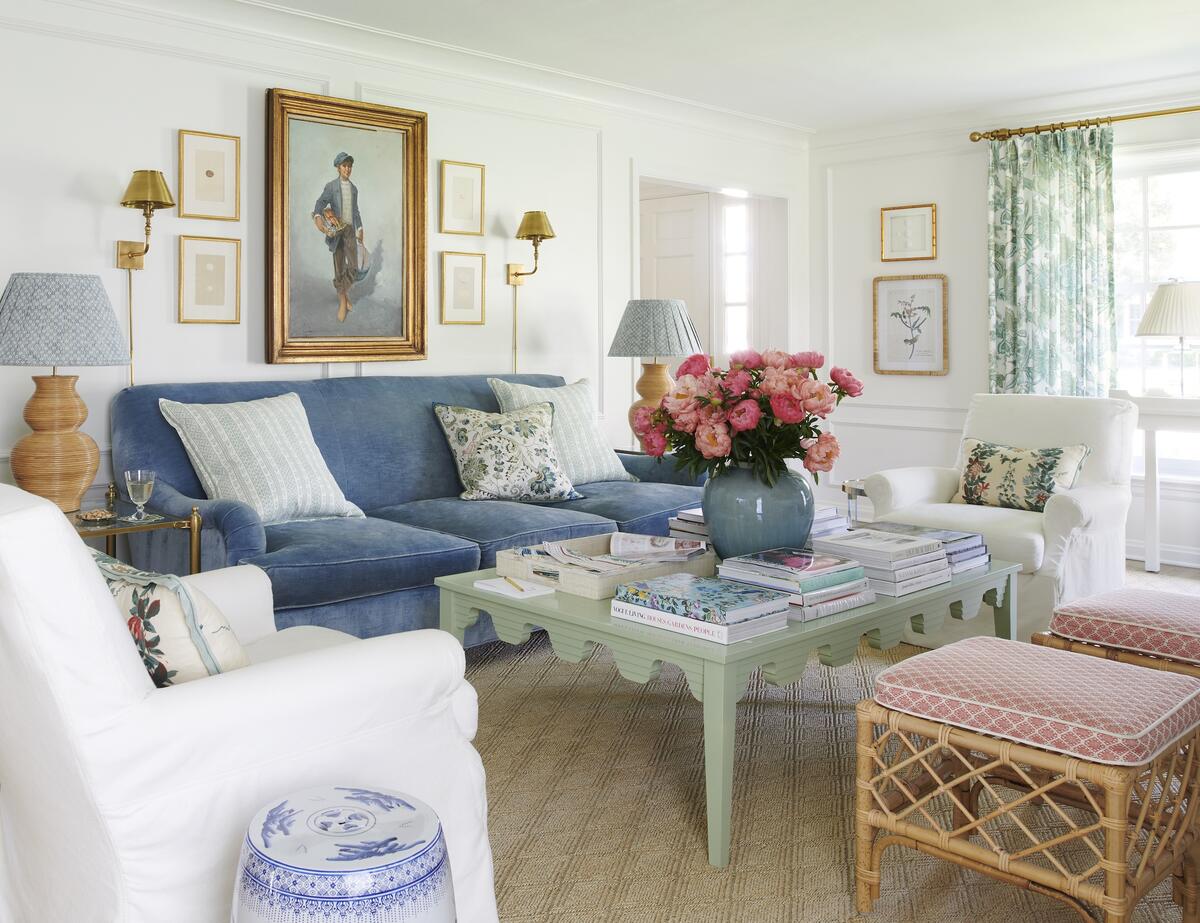
Tell me about your local design scene. What’s unique about the work you’re doing in St. Louis?
I love St. Louis. I was born and raised here, and it’s such a wonderful place to have a family. I feel like the people here have that mentality: They were born and raised here, and maybe they leave for a period, but they come back. I think we get a lot of client referrals locally because it is such a small, well-connected community—when you do work with one person, they’re always like, “Oh, I have a friend who’s building a house, and I want to recommend you.”
We have a lot of newer construction, but we also have a lot of wonderful historic homes that were built during the World’s Fair [in 1904], so we get to work on projects that are of varying types. Right now we have one that was built during [that turn-of-the-century] time, and it’s exciting to see the wonderful historic moldings and architectural details. But then another house we just finished building has more of a New England aesthetic. That’s been wonderful to work on because it has a little bit more of that cottage feel, with shingles and wonderful wood floors and textures. I really enjoy the challenge of working in different styles.
Is there a specific aesthetic that clients are coming to you for?
Yes. I’m sure everyone is thinking, “I’m confused—everything you just described is literally nothing on your website or Instagram.” People do come to us with a wide variety of styles [of home], but the aesthetic that they’re wanting from us is new-meets-old. It’s this very warm, comfortable, welcoming look.
How and where do you source?
Our current studio [is located near] KDR, which is considered the design center of St. Louis, and has a lot of wonderful upholstery lines and casegood lines. So it’s been a great support to us, and a resource where our clients can sit on upholstery and we can talk it through even if it’s not the exact piece. We can say, “Hey, your sofa is about here, your arm’s out here. Here’s what it’s looking like.” And when it comes to upholstery, we’ve really had great help [from KDR].
Outside of that, I’ve developed quite a few relationships all over the United States and also in Europe with antiques vendors and dealers and boutique shops. I travel maybe six times a year to Atlanta to shop the wonderful antiques that they have down there, or I’ll go to New York. I was there two weeks ago pulling textiles from boutique vendors. I even do a lot of custom furniture. So my team and I will hand-sketch tables, benches, dressers, beds, whatever. And we will have local craftsmen here in St. Louis, with whom we’ve built a wonderful relationship, build our furniture, then either deliver locally or ship to our projects.
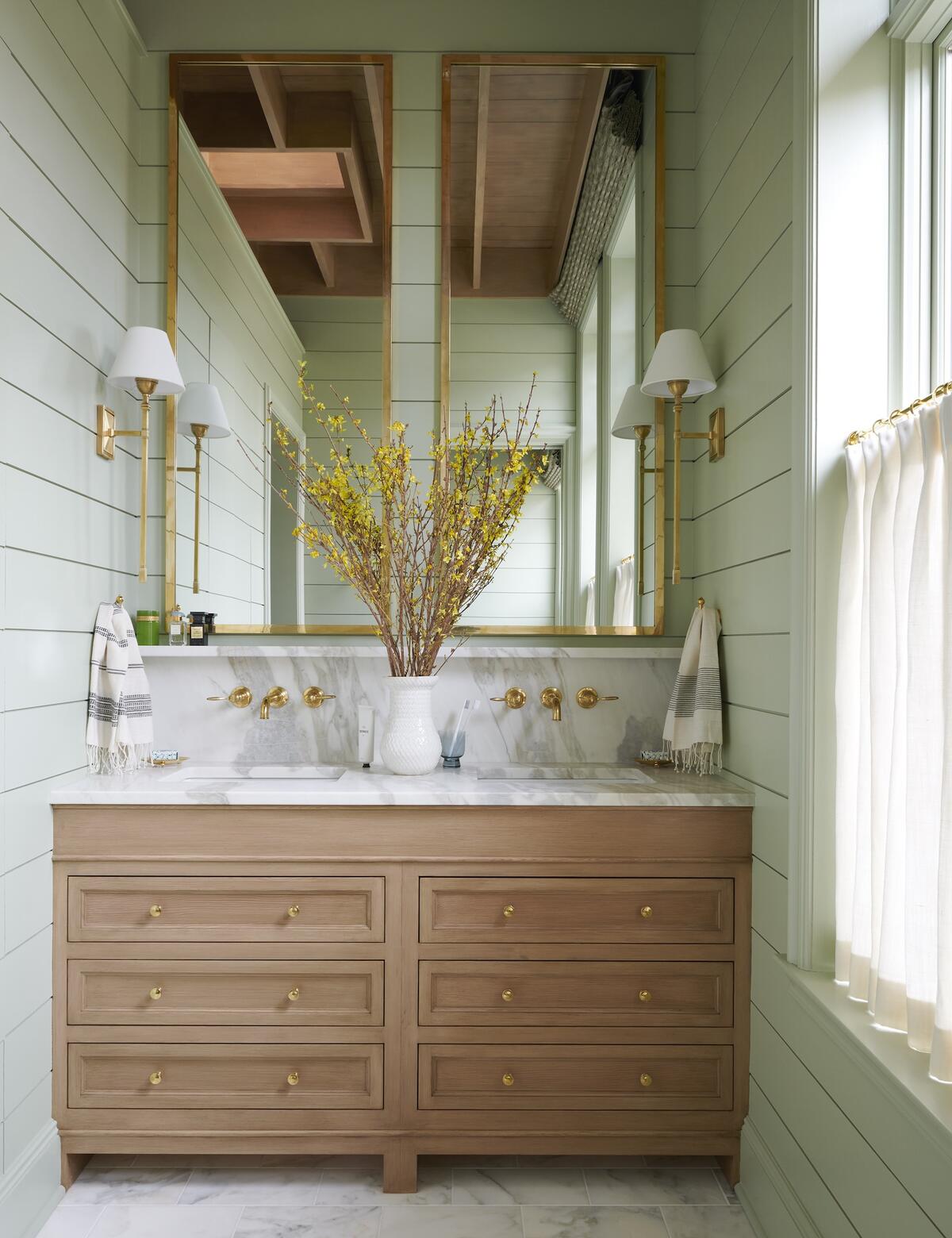
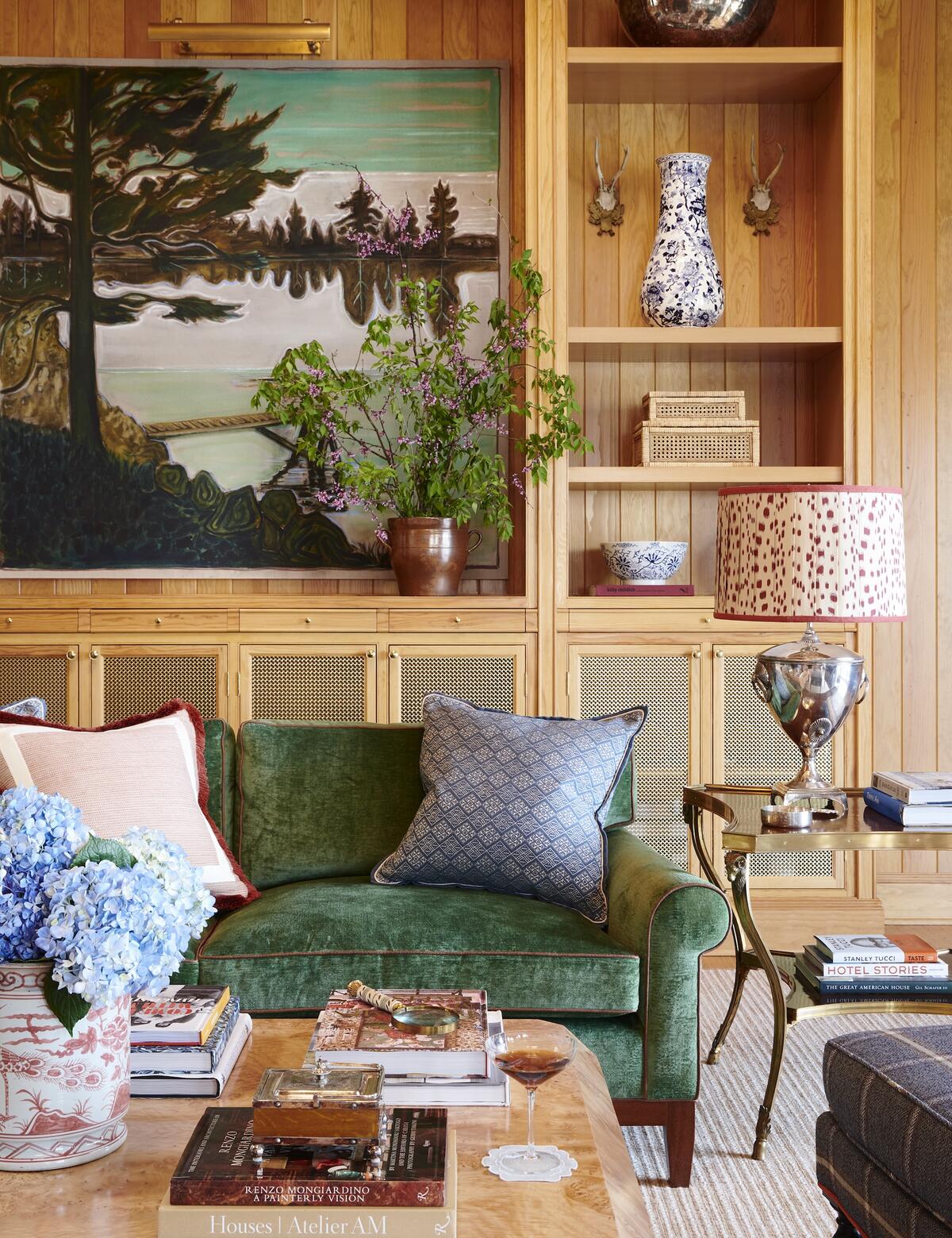
How have you approached charging for the firm’s work?
I charge an hourly rate, and then there is a commission structure on top of the items that we’re procuring for the client. Typically, that’s just going to be things like furniture and fabrics, but sometimes we also get involved in procuring the appliances, tile and such. Our clients know that for whatever is run through our business—and at minimum, it’s going to be all of the interior decor—there is going to be a designer discount [on the cost of the item] and then a set commission on top of that.
We feel very good about our structure. We do have some potential clients who ask quite a few questions about it, and we explain it. If it works for them, it works for them; if it doesn’t, it doesn’t. And any of the clients who have been really good clients, who understand our process or the need for a luxury-level design firm, don’t ask those questions. So we kind of know that when we start getting lots of questions or feedback, it’s probably not the client who’s going to align with how we run our business, and they would probably find a better fit elsewhere.
How are you filtering for projects of the right size?
So many prospective clients call my office and say, “What is your minimum? We have this small project.” My husband actually joined the company to run the business side of my firm—so now it’s our firm—and he is the one who handles all incoming requests. He always starts by saying, “Don’t worry about a minimum. Just tell me about your project. Tell me what you’re looking for.”
What it comes down to is this: Our clients value their home and what it looks like at the end of the day. It’s that simple. We have found that there are some clients with unlimited budgets, or even just fabulous budgets, whom we’ve wanted to work with but then they’re really more like, “Just fill my house—I really don’t care.” And when they don’t care, or they’re not really into the details, we know it’s not a client for us.
I’ll bet some people are going to be reading this saying, “Wait, I want that client!”
I am very layered and very into the details. I care about how your molding terminates, where the paint starts and stops, and the sheen level. So it really comes down to [finding clients] who value their home and trust us to handle it, but still get excited about the details.
We had someone call in a couple months ago from the Northeast, and the first question the husband asked was, “What’s your minimum?” And my husband says, “Well, tell me about your project.” They said, “Would Amy really fly out here for just like four rooms?” And my husband says, “Tell me about your project.” Later, he came back and said to me, “Amy, I have never heard another man talk so passionately about his house and how he wants to carry on the legacy of the previous person who owned it. I think this is a project for you.” And I said, “Yes. Yes, it is. Send me up there!” I know that they are going to value the hours that my team and I put into the home, and they value paying that invoice because they want us there and they want us to care. Only after that do we talk loosely about numbers, just to make sure they are on the same level of understanding about what it might cost to do four rooms, or a whole home, or whatever it is.

How did your husband joining the company change your experience in your business?
Oh, it relieves so much stress for me. Even though I had support, I was always the person everybody came to on the business side to ask questions, so I was running myself ragged trying to make appropriate business decisions, while also making appropriate design decisions. I told my husband, “I need to hire somebody to run the business end of this, and I feel like you would do an amazing job. I think we could work together.” And he said, “You know, I really think that we could.” He was in medical sales at the time, and he said we could talk about it in six months. When that six months came and went, I just said, “Nick, I really feel that if you join the company, there’s so much potential here, but I can’t do it [alone]. We’re either going to go backward because I need to slow down, or I can go forward with your help.”
He joined the company in March 2021, and it has been such an amazing relief. Anytime we need to hire someone, he can spend the time vetting the person and finding a great fit. He can answer all of the business questions. So now I can really focus on the construction and the design. I can travel without feeling that I’ve left half my team in need of me, because my husband is there overseeing everything. And they all feel very comfortable going to him as the head of the company and the business side to answer questions and get things done.
When you look ahead, where do you see the most opportunity to grow?
I love the size of the team we currently have. We’ve always grown, grown, grown, but I don’t foresee [much more]. But I would love to expand in avenues like a product line—again, I love helping people and creating a product that meets their needs. We are also in the very beginning stages of a book, and I am thrilled to get to do that.
What does success mean to you?
I feel that I have a very successful company. But I feel like I get that from the fact that I can stand back and say, “This is something that I initially began building on my own, but then others came to help me build, and it’s made them happy, and it’s made me happy.” And then for my husband to even be able to join, and my son to want to join the company—even though he’s only 10, he wants to join the company—to me, that is success.
To learn more about Amy Studebaker, visit her website or find her on Instagram.
















